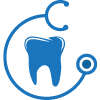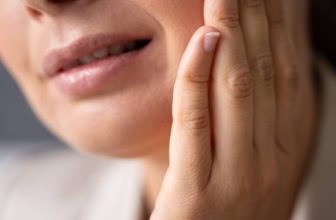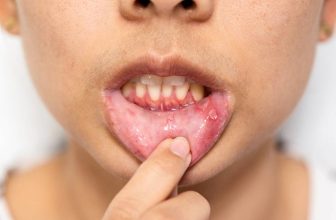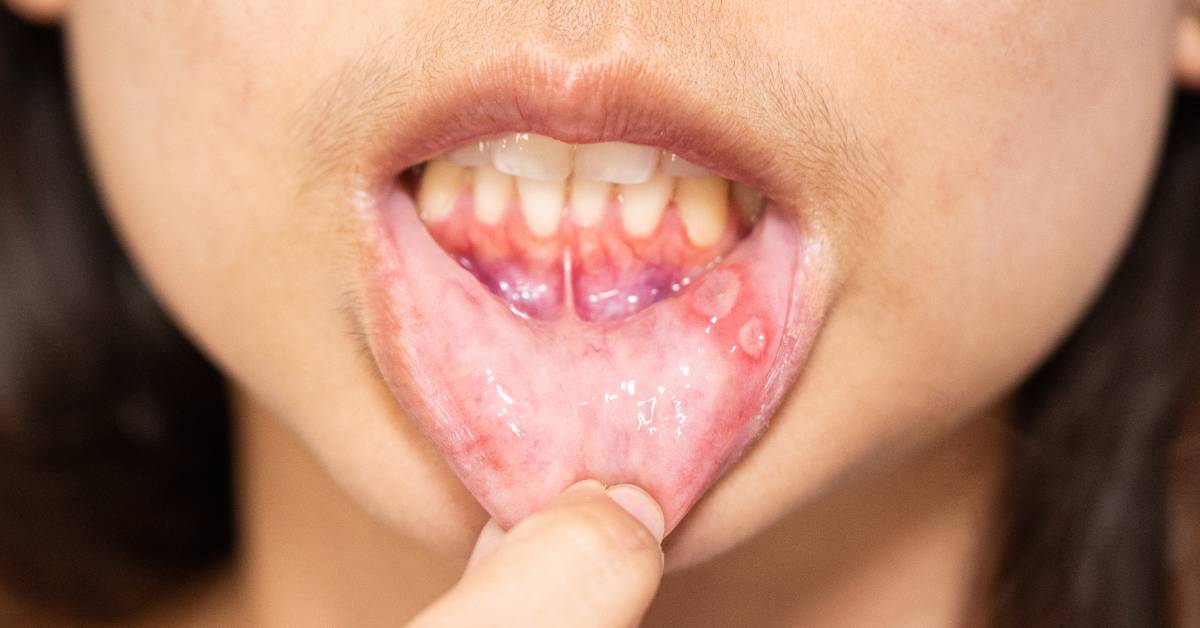
If you’ve ever had a canker sore, you know how painful and uncomfortable they can be. These small, shallow ulcers can form on the inside of your mouth, on your tongue, or on your lips. While canker sores are not contagious, they can make it difficult to eat, drink, and speak normally.
Canker sores go through several stages of development before they finally heal. Understanding these stages can help you identify when you have a canker sore and what you can do to manage the pain and discomfort. In this article, we’ll take a closer look at the 7 stages of canker sores and what you can expect during each stage.
7 Stages of Canker Sores:

Canker sores, also known as aphthous ulcers, are painful lesions that develop in the mouth or at the base of the gums. They can be caused by various factors such as stress, injury, hormonal changes, or certain foods. Canker sores typically go through seven stages before they heal completely. Here are the seven stages of canker sores:
Stage 1: Initial Tingling

The first stage of a canker sore is characterized by a tingling or burning sensation in the affected area. This stage usually lasts for a few hours to a day and is often accompanied by redness and inflammation.
Stage 2: Development of canker sores
During this stage, the canker sore begins to take shape. The sore appears as a small, round, or oval-shaped lesion with a white or yellowish center and a red border. This stage typically lasts for one to two days.
Stage 3: Full Development
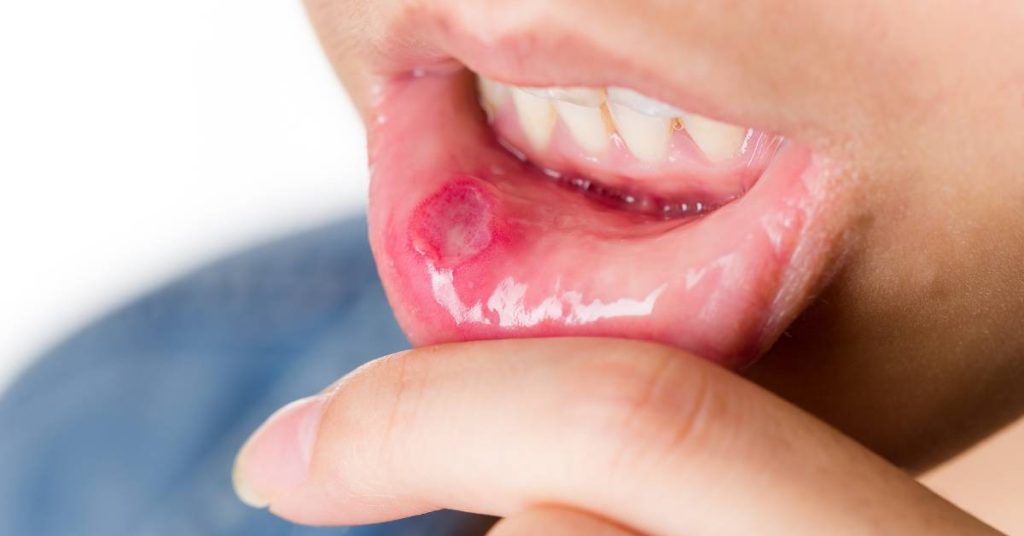
In this stage, the canker sore reaches its full size and depth. The sore may become more painful and sensitive to touch. This stage usually lasts for three to four days.
Stage 4: Sores Expand
During this stage, the canker sore may expand in size and become more painful. The sore may also start to bleed or ooze pus. This stage typically lasts for five to six days.
Stage 5: Sores Burst
In this stage, the canker sore bursts open, exposing the underlying tissue. This can be very painful and may cause bleeding. This stage usually lasts for seven to eight days.
Stage 6: Healing Begins
During this stage, the canker sore begins to heal. The sore may start to shrink in size and the pain may begin to subside. This stage typically lasts for nine to ten days.
Stage 7: Complete Healing of canker sores
In the final stage, the canker sore heals completely. The sore may leave a small scar or indentation in the tissue, but this is usually temporary. This stage can last for up to two weeks.
It is important to note that the duration of each stage may vary depending on the individual and the severity of the canker sore. If you experience frequent or severe canker sores, it is recommended to consult with a healthcare professional for proper diagnosis and treatment.
Treatment Options
Canker sores are painful and uncomfortable, but they usually go away on their own within one to two weeks. However, there are various treatments available that can help alleviate the pain and speed up the healing process.
Topical Treatments
Topical treatments are the most common way to treat canker sores. They come in different forms such as gels, ointments, and rinses. These treatments can help numb the pain and protect the sore from further irritation.
Some of the topical treatments that you can use include:
- Hydrogen peroxide (Orajel Antiseptic Mouth Sore Rinse, Peroxyl)
- Over-the-counter gels, such as Orajel and Anbesol
- Prescription gels, such as Kenalog in Orabase and Lidex
- Mouthwashes, such as Colgate Peroxyl and Listerine
Oral Medications
In severe cases, oral medications may be prescribed to help treat canker sores. These medications are usually used when the sores are large, painful, or do not respond to topical treatments.
Some of the oral medications that may be prescribed include:
- Prednisone, a steroid that can help reduce inflammation and pain
- Tetracycline, an antibiotic that can help reduce the duration and severity of the sores
- Colchicine, a medication that can help reduce the frequency of canker sores
Home Remedies
In addition to the above treatments, there are also a few home remedies that you can try to help alleviate the pain and promote healing. Some of these remedies include:
- Saltwater rinses
- Baking soda paste
- Honey
- Aloe vera gel
- Zinc supplements
While these home remedies may not work for everyone, they are generally safe and worth a try.
Prevention
Preventing canker sores from occurring in the first place is the best way to avoid the pain and discomfort that comes with them. Some tips for preventing canker sores include:
- Avoiding foods that trigger canker sores, such as citrus fruits, tomatoes, and spicy foods
- Using a soft-bristled toothbrush and brushing gently
- Using a mouthwash that does not contain alcohol
- Managing stress through exercise, meditation, or other relaxation techniques
In conclusion, there are various treatment options available for canker sores, including topical treatments, oral medications, and home remedies. Additionally, taking steps to prevent canker sores from occurring in the first place can help reduce the frequency and severity of these painful sores.
When to Seek Medical Attention
Most canker sores heal on their own within a week or two without medical treatment. However, in some cases, canker sores can be a sign of an underlying health condition that requires medical attention. Here are some situations when you should seek medical attention:
- Large sores: If you have a canker sore that is larger than 1 centimeter in diameter, it is considered a major canker sore and may require medical treatment. Major canker sores can be very painful and take longer to heal than minor canker sores.
- Persistent sores: If you have a canker sore that lasts for more than two weeks, it may be a sign of an underlying health condition and you should see a doctor. Persistent canker sores can be a symptom of an autoimmune disease, nutritional deficiencies, or other health problems.
- Frequent outbreaks: If you have canker sores that recur frequently, you should see a doctor. Frequent outbreaks can be a sign of an underlying health condition or a weakened immune system.
- Severe pain: If your canker sore is causing severe pain that makes it difficult to eat or drink, you should see a doctor. Severe pain can be a sign of a major canker sore or an infection.
- Fever: If you have a fever along with your canker sore, it may be a sign of an infection. You should see a doctor if you have a fever along with your canker sore.
If you have any of these symptoms, it is important to see a doctor. Your doctor can diagnose the underlying cause of your canker sores and recommend appropriate treatment.
Conclusion
Canker sores are a common condition that can be quite painful and uncomfortable. Understanding the stages of canker sore development can help you identify when you may be at risk of developing a sore, and take steps to prevent or treat it.
The prodromal stage is the earliest stage of canker sore development, and often involves a tingling or burning sensation in the affected area. This is followed by the macule stage, where a small, red or white bump appears. The ulcer stage is when the sore becomes an open wound, and can be quite painful. Finally, the healing stage is when the sore begins to close up and heal.
While canker sores are not usually serious, they can be quite painful and uncomfortable. If you are experiencing frequent or severe canker sores, it may be a good idea to speak with your doctor or dentist to rule out any underlying health conditions. In the meantime, there are a few things you can do to help prevent canker sores, such as avoiding spicy or acidic foods, using a soft-bristled toothbrush, and managing stress levels.
Overall, understanding the stages of canker sore development can help you take better care of your oral health, and reduce the chances of developing painful sores in the future.
